Regarding the history of pottery in the ancient South, researcher Ho Hoang Tuan (Ho Chi Minh City Antiquities Association) said: "After being established and developed in the Cho Lon - Saigon area, the pottery profession in the South spread to neighboring areas such as Lai Thieu (formerly Binh Duong ), Bien Hoa (Dong Nai) and has developed to this day. In Saigon, the products have a cultural exchange between China and Vietnam according to the needs of local residents. Pottery kilns have constantly improved, developed product quality, introduced and promoted, and segmented the market to meet the needs of many components in contemporary society. Cay Mai pottery products can be considered one of the historical evidences of the formation and development of the ancient Southern land".

The old Southern house with display space for Mai tree ceramic pots and stools
Photo: Documentary by Ho Hoang Tuan
A village official with the place name Saigon - Nam Ky is sitting at a table with a pair of Mai Tree ceramic hexagonal pots below.
Photo: Documentary by Ho Hoang Tuan
Some typical and famous pottery kilns of the Cay Mai pottery line at that time were Buu Nguyen, Dong Hoa, Dong An, Dao Xuong, Nam Loi An, Hoa Loi Tuong... In particular, Buu Nguyen pottery kiln was considered a prominent kiln and had great influence on the ancient Saigon pottery industry, with many unique and sophisticated products. Buu Nguyen kiln was located on the left bank of Lo Gom canal - an important waterway, which once played the role of the main traffic axis to transport raw materials and ceramic products throughout the regions.
Artisans played a pivotal role in the prominent pottery kilns of old Saigon.
Taking the trouble to find the four artisans who played a pivotal role in the Buu Nguyen pottery kiln and created a reputation for the ancient Saigon pottery profession, researcher Nguyen Huu Loc (Ho Chi Minh City Museum of History) approached the artifacts and studied the content of the inscription, clearly stating the names of the artisans of the Buu Nguyen kiln at that time, including: "Phien ap, Ha Thao tac", "Thuan ap, Tran Cam tac", "Thuan ap, Tran Tao tac" and "Tran Hoa Sinh hoi".
"First, it is necessary to clarify the meaning of 'Thuan ap' and 'Phien ap', which is most likely the craftsman's hometown. In the past, the word 'ap' was used with a fairly broad and flexible meaning. 'Ap' can be understood as a city, town or district, and sometimes it can also mean hamlet (in the past, large areas were called cities, small areas were called hamlets), but it is not hamlet according to the current way of dividing administrative units. According to the Chinese way of using, 'ap' here must be understood as a district. The way of calling hometown with the word 'ap' is quite common among some Chinese groups, including the Cantonese. Accordingly, 'Thuan ap' and 'Phien ap' are the abbreviations of Thuan Duc District and Phien Ngung District (Guangdong, China)", Master Nguyen Huu Loc analyzed.
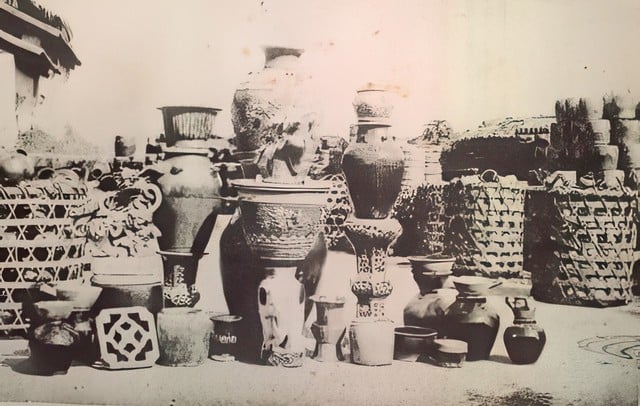
Cay Mai pottery kiln and products
Photo: Phi Ngoc Tuyen's documents

A Southern woman poses with a tea table and pot pedestal. In the picture is a set of hexagonal ceramic pot pedestals. Cay Mai is planting a mai chieu thuy tree in the ancient bonsai style of “three obediences and four virtues”.
Photo: Documentary by Ho Hoang Tuan
The earliest date of the products with the name of the maker is 1908 (Tue Thanh Assembly Hall) and the latest is 1930 (Hoa Luc Communal House). Through the existing evidence, Master Nguyen Huu Loc explains each case: "In Buu Nguyen pottery kiln, Tran Cam, Tran Tao and Ha Thao were the ones who directly created the products. Moreover, for more than 22 years (from 1908 to 1930), Tran Tao, Tran Cam and Ha Thao were also the main craftsmen, playing a pivotal role in creating most of the decorative ceramic products for Buu Nguyen kiln. As for Mr. Tran Hoa Sinh, it is not clear whether he was a member of Buu Nguyen kiln or a painter under the order of the kiln owners. But it must be recognized that he was very knowledgeable about ancient legends in ancient Chinese literature".
Tran Cam and Tran Tao were from Thuan Duc district, Ha Thao was from Phien Ngung district. Researcher Luu Kim Chung's documents also added: "In Guangdong, the two families Tran (in Thuan Duc district) and Ha (in Phien Ngung district) were both large families, with many people participating in pottery production for kilns in Thach Loan (Shiwan).

The first ancient ceramic line is Cay Mai ceramic of ancient Saigon.
Photo: TUAN HOANG

Ancient ceramics from China were introduced to Vietnam, creating generations of talented ceramic artisans in ancient Saigon.
Photo: Tuan HOANG
"From this basis, it can be affirmed that along with the Chinese immigration to settle in Vietnam, some potters: Tran Cam, Tran Tao and Ha Thao... brought the traditional pottery craft to Saigon to establish a business at Buu Nguyen pottery kiln. With their own secrets and techniques, these potters continued to produce in the new land, contributing to the formation of the Guangdong pottery school in Saigon pottery. Decorative ceramic products, especially the miniature statues they made, have created a reputation for Saigon pottery in history. This also explains why the characteristics of the costumes of the characters on the Saigon ceramic miniature statues are similar to the types of statues made by Shiwan kiln - the type of costumes associated with the classical Cantonese stage. In addition, the glaze color of the Saigon ceramic miniature statues is also similar to the glaze color on statues made at Shiwan," said Master Nguyen Huu Loc.
Source: https://thanhnien.vn/nhung-nghe-nhan-tao-danh-tieng-cho-nghe-gom-sai-gon-xua-185251104111839482.htm


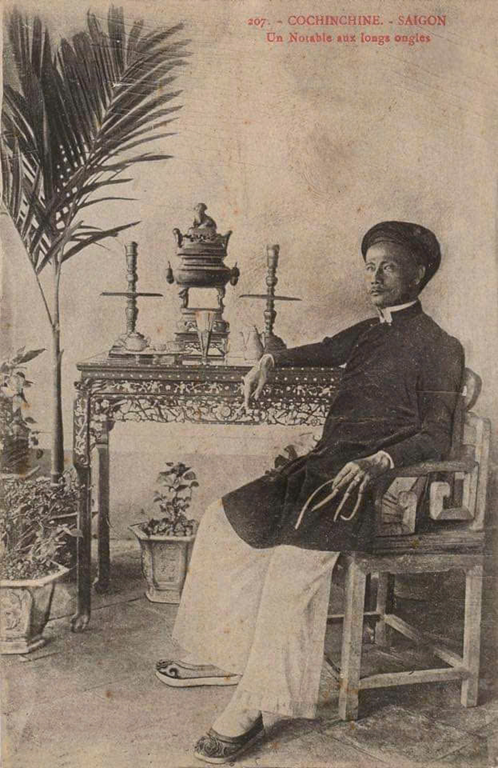





![[Photo] Opening of the 14th Conference of the 13th Party Central Committee](https://vphoto.vietnam.vn/thumb/1200x675/vietnam/resource/IMAGE/2025/11/05/1762310995216_a5-bnd-5742-5255-jpg.webp)


![[Photo] Ho Chi Minh City, a multi-centered megacity after the merger](https://vphoto.vietnam.vn/thumb/402x226/vietnam/resource/IMAGE/2025/10/28/1761644283512_ndo_br_2-jpg.webp)






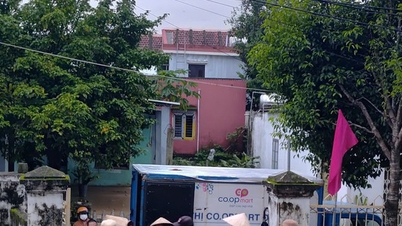

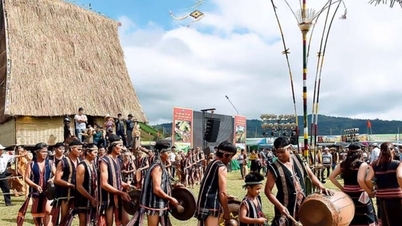



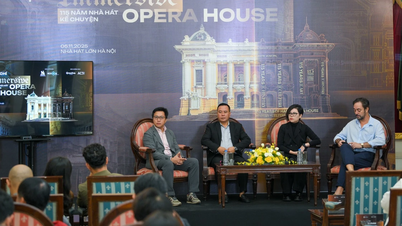












![[Photo] Panorama of the Patriotic Emulation Congress of Nhan Dan Newspaper for the period 2025-2030](https://vphoto.vietnam.vn/thumb/1200x675/vietnam/resource/IMAGE/2025/11/04/1762252775462_ndo_br_dhthiduayeuncbaond-6125-jpg.webp)







































































Comment (0)